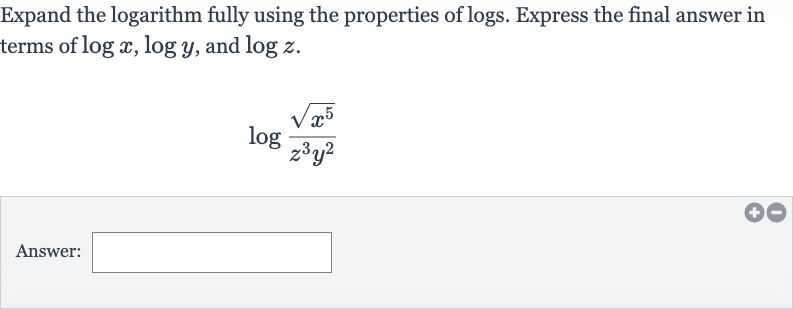Full solution
Q. Expand the logarithm fully using the properties of logs. Express the final answer in terms of , and .Answer:
- Apply Quotient Rule: We start by applying the quotient rule of logarithms, which states that . In this case, we have and .
- Apply Power Rule: Next, we apply the power rule of logarithms, which states that . For the numerator, we have which is , and for the denominator, we have and .
- Rewrite Using Product Rule: We can now rewrite the logarithm as by applying the product rule of logarithms, which states that , to the denominator.
- Apply Power Rule: We apply the power rule to each term: becomes , becomes , and becomes .
- Subtract Logs: Subtracting the logs in the denominator from the log in the numerator, we get .
- Final Expanded Form: This is the fully expanded form of the original logarithm in terms of , , and .

